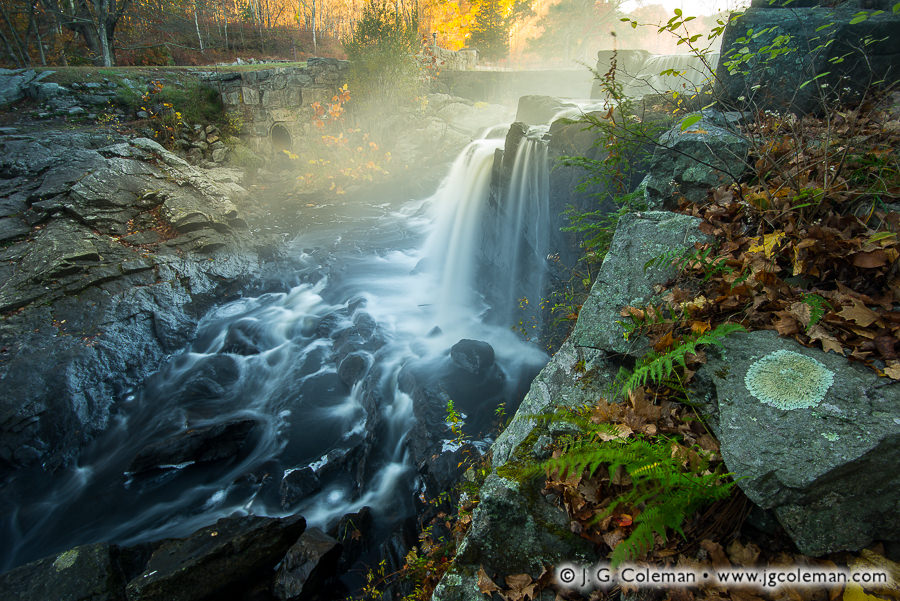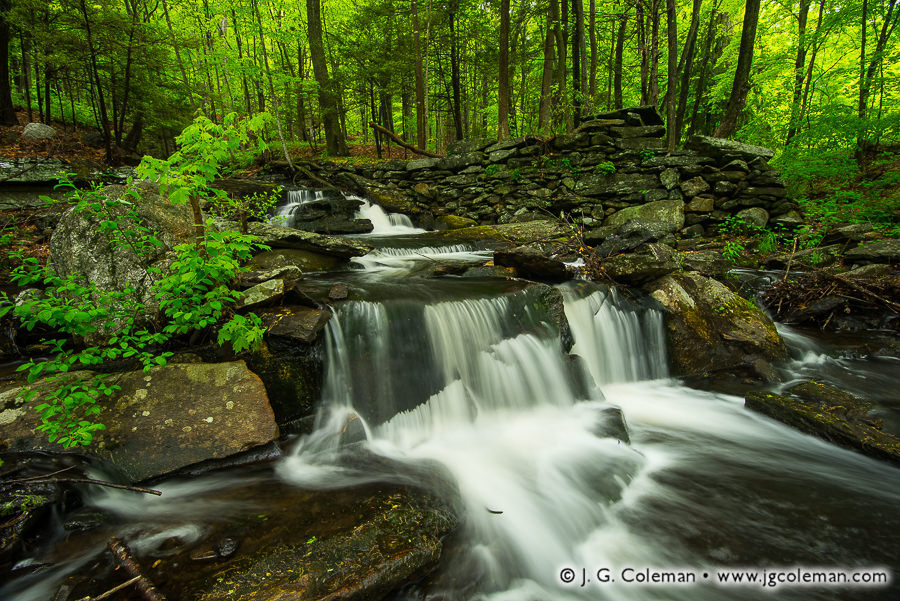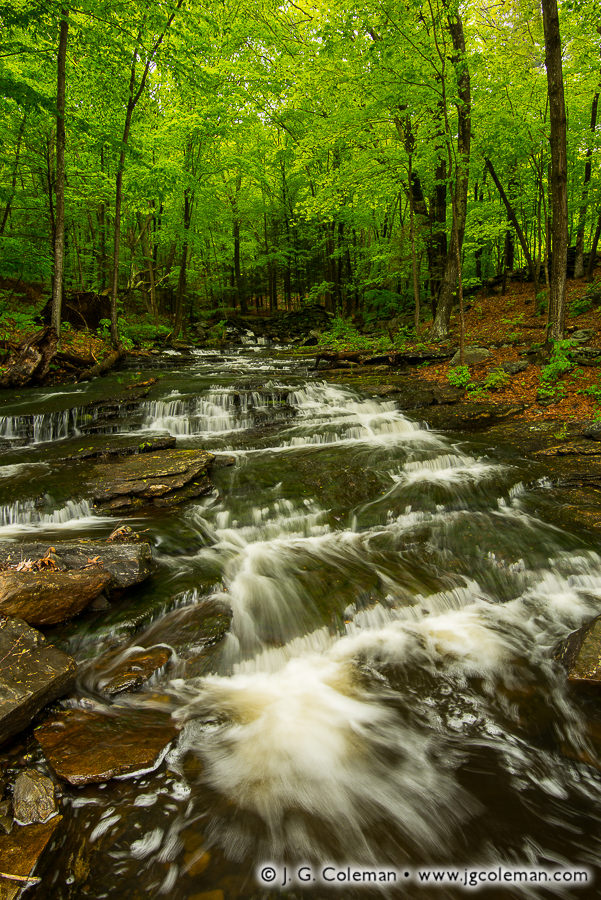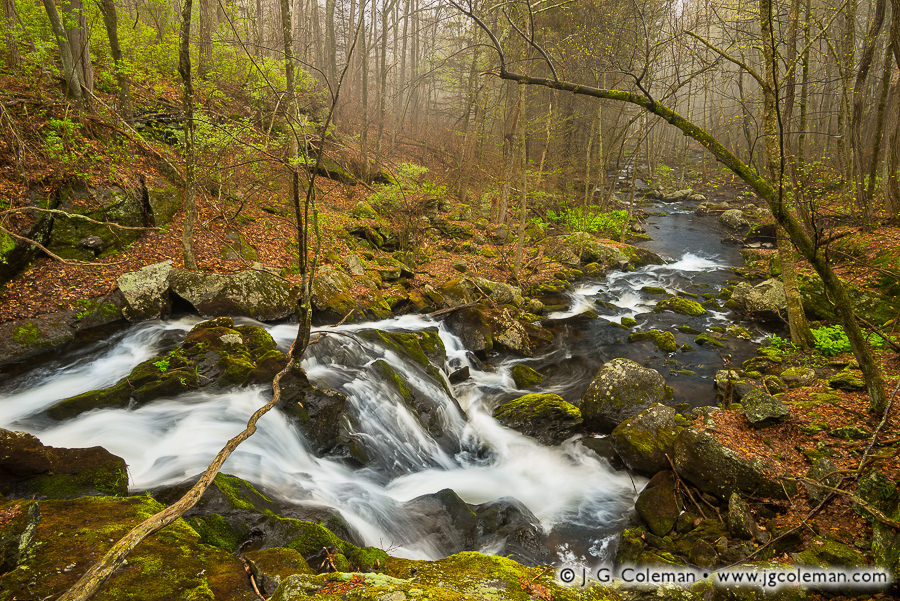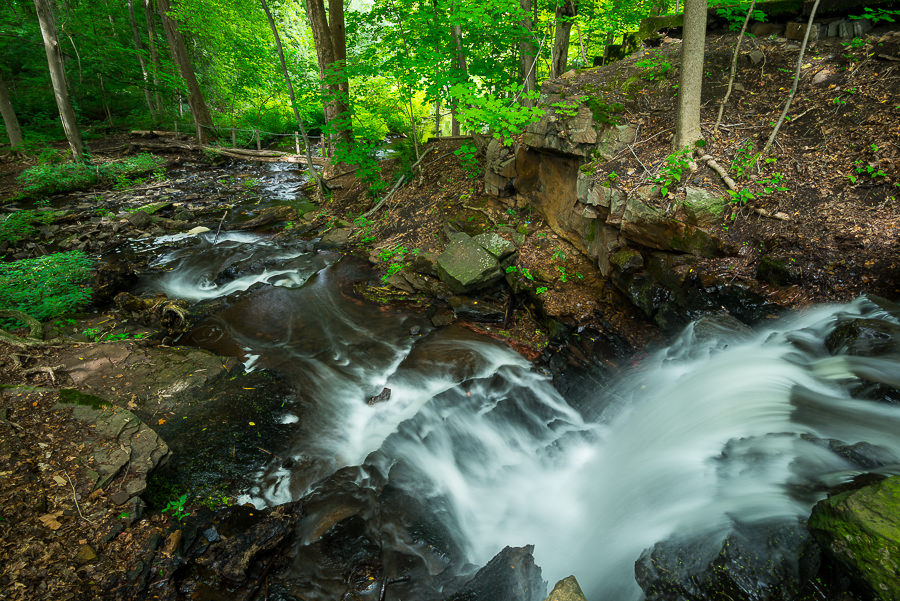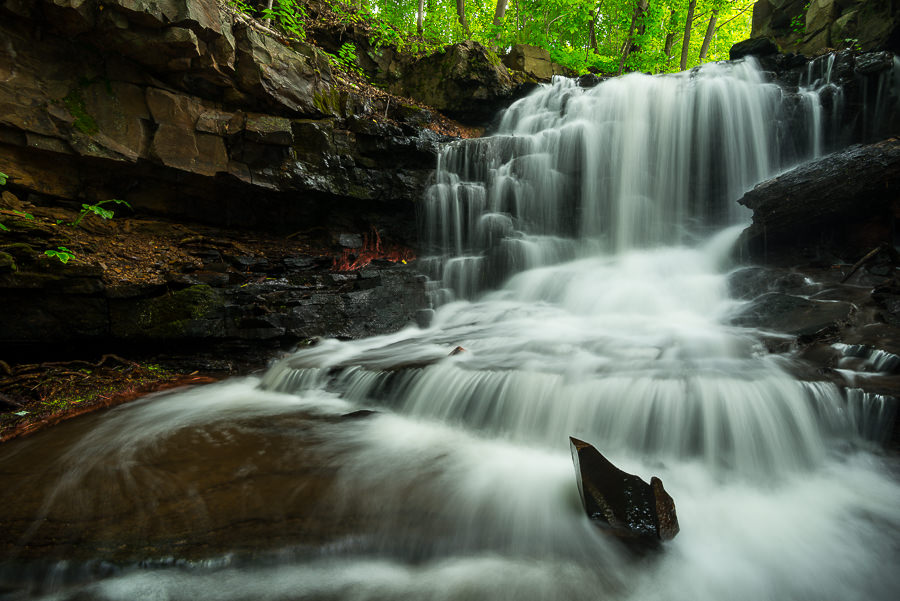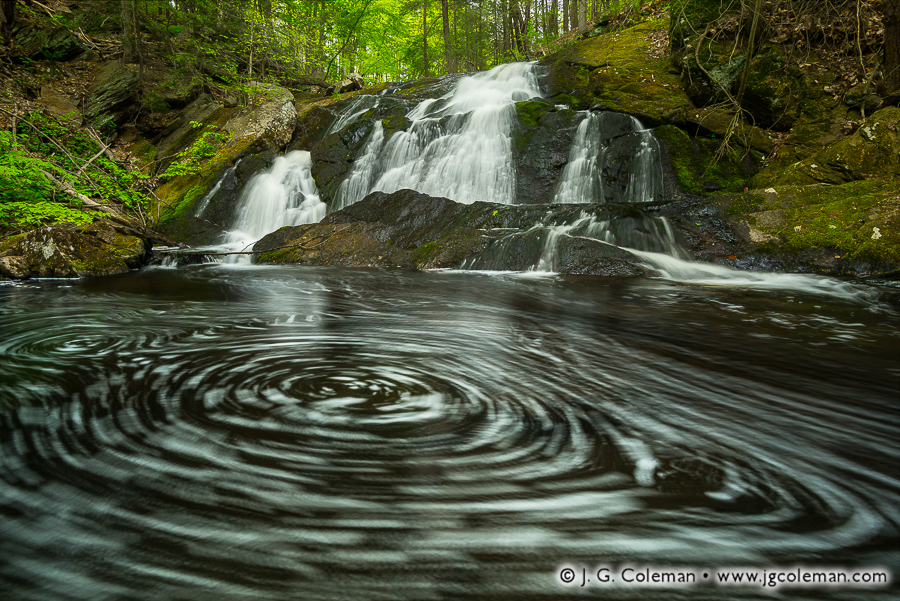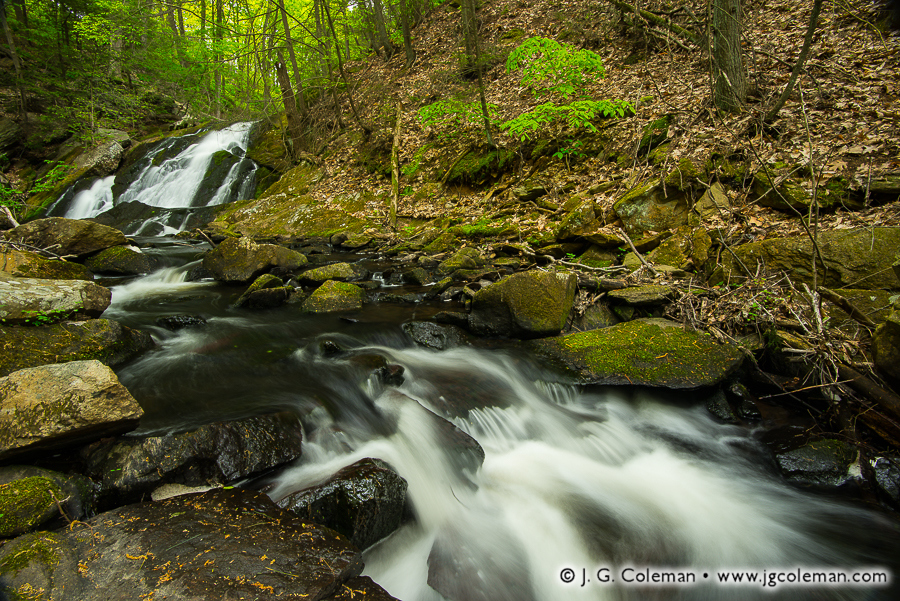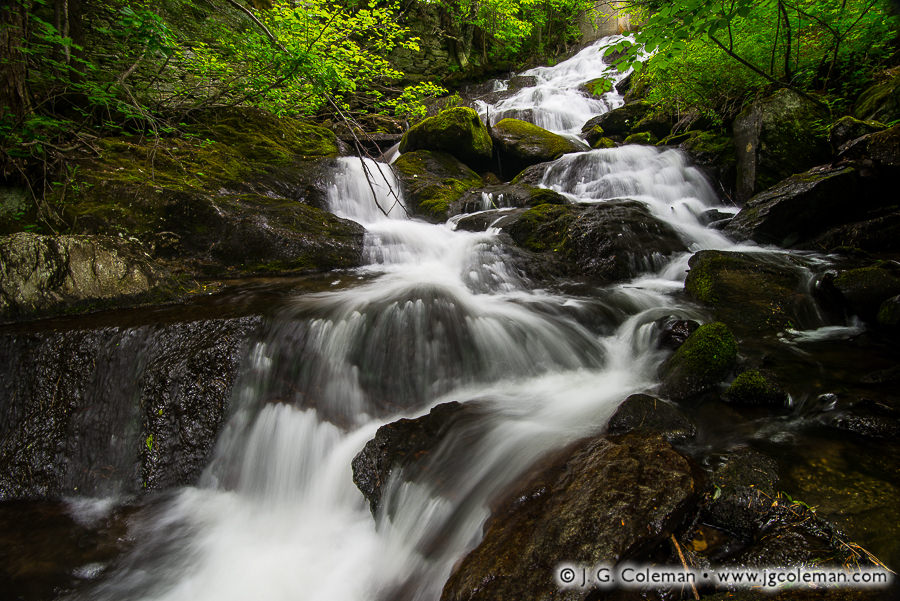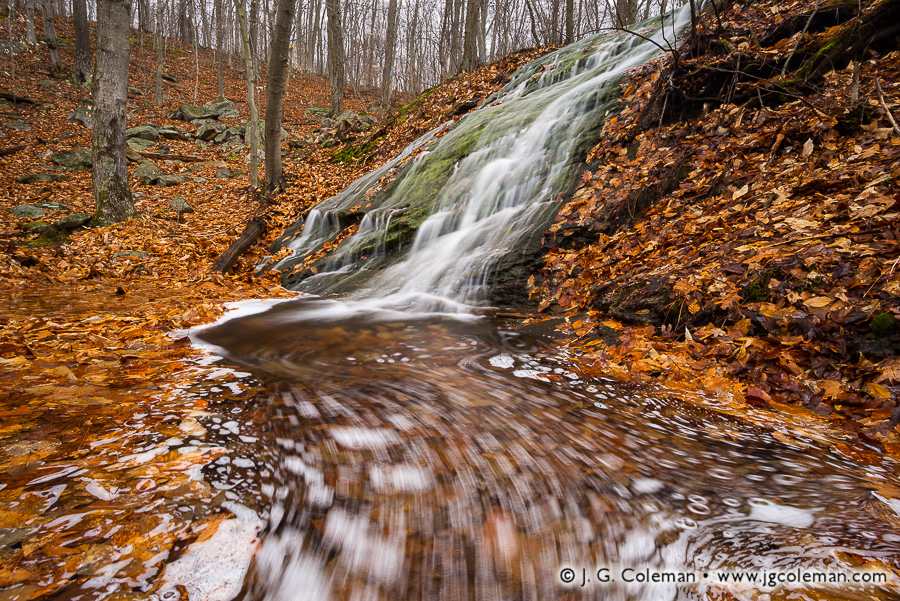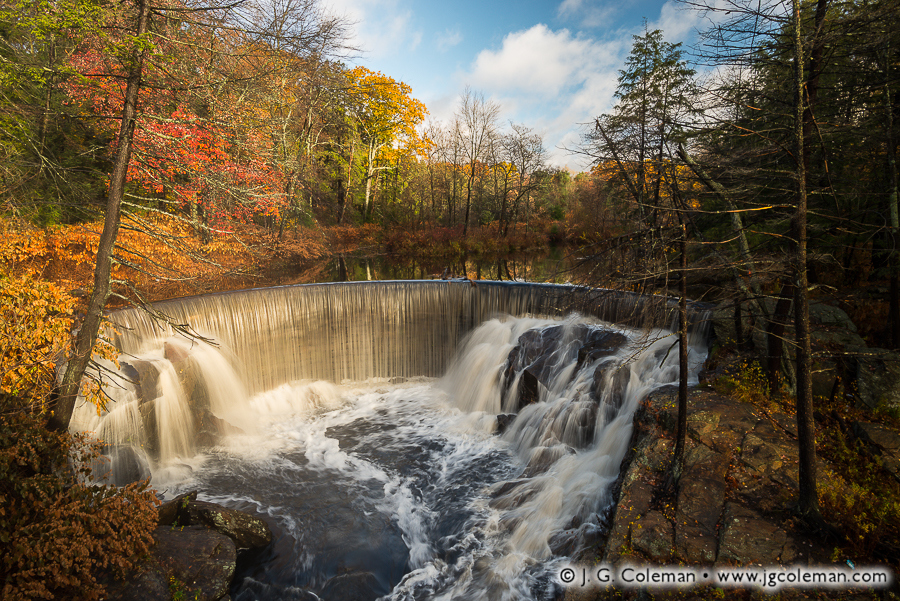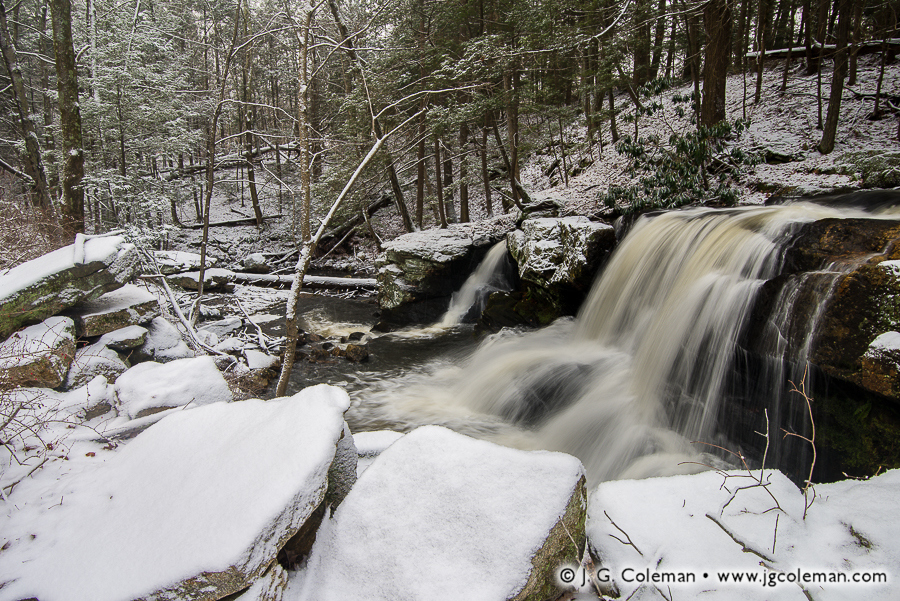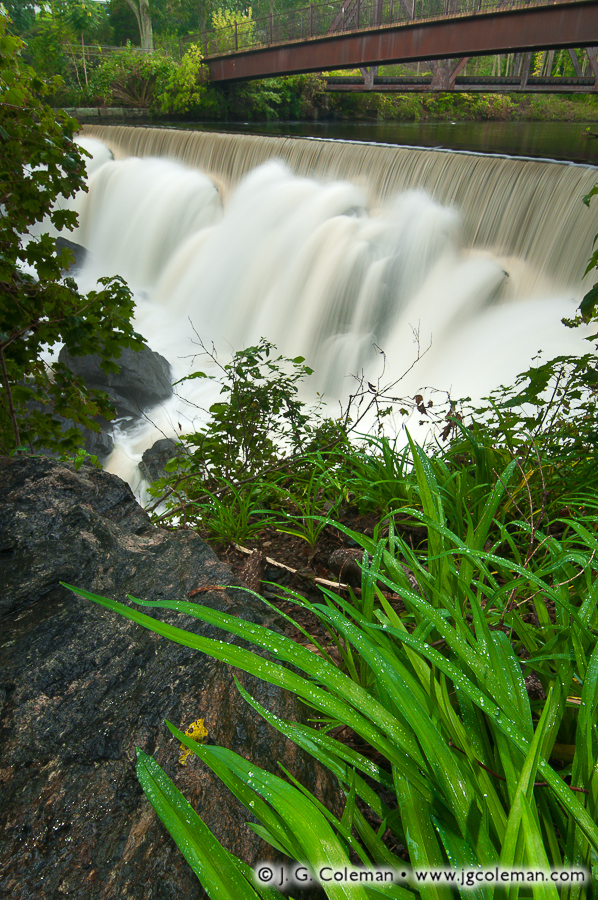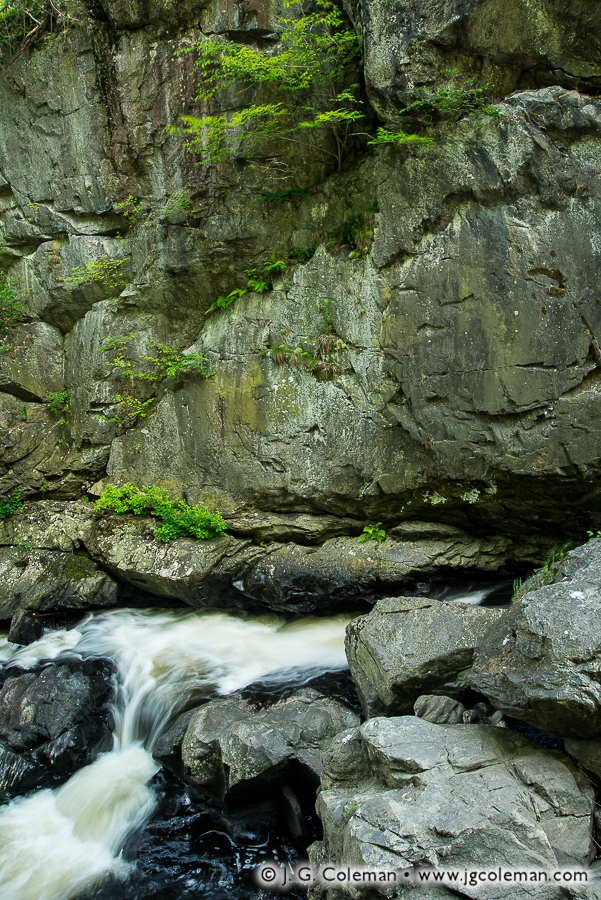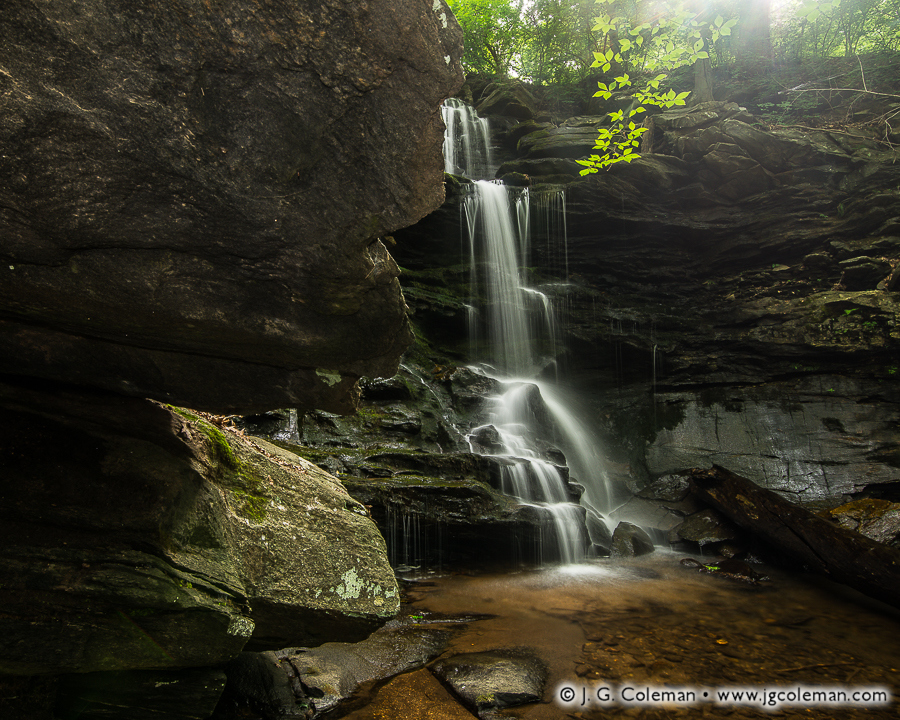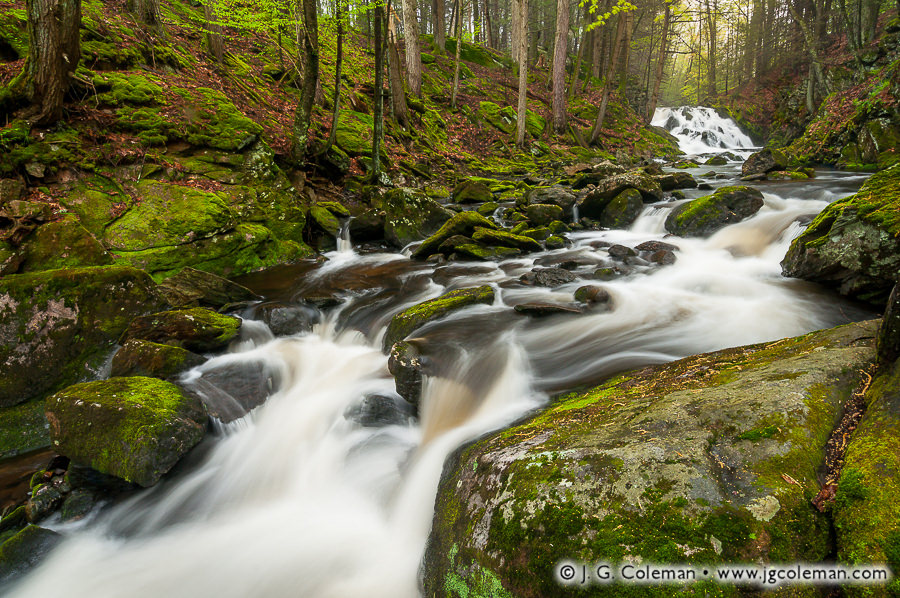
Upper Burlington Falls on Bunnell Brook, Burlington, Connecticut
Bunnell Brook crashes over a waterfall in the distance, roiling itself into a whitewater frenzy and charging forth through the verdant woodlands in the hills of Burlington.
Many of Connecticut’s waterfalls were named long ago when they were at the heart of streamside mills driven by waterwheels or turbines. Some folks may have appreciated the natural beauty back then, but most probably knew them as busy places of industry where goods were churned out and livings were made. And in some cases, once those mills vanished and the waterfalls ceased to be places where livelihoods were earned, the names and stories behind each could become quite jumbled and obscure in just a generation or two.
Take the case of Bunnell Brook in Burlington, where there are two distinct waterfalls found about 600 feet apart. We know that one of the two waterfalls was historically called “Bunnell’s Falls”, but which one? An 1895 publication suggests it was the lower falls, though more recent publications tend to apply that name to the upper falls (which are seen in this piece). I don’t know who’s right, but in the meantime, I’ll just stick to Upper and Lower Burlington Falls.
Purchase a Fine Art Print or Inquire About Licensing
Click here to visit my landing page for “Old Hotchkiss Riverscape” to buy a beautiful fine art print or inquire about licensing this image.
Want to See More?
Be sure to check out all of my work from Burlington, Connecticut.


